When the Soviet military wanted some heavy lifting done, they called in a Mil Mi-10 helicopter.
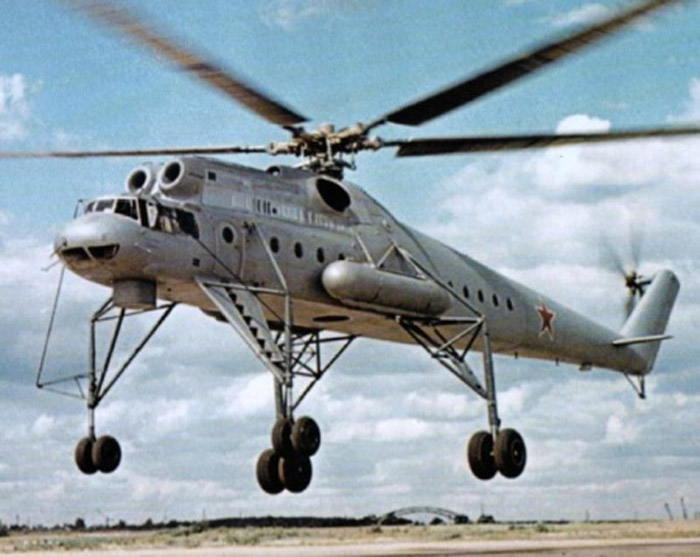
This behemoth was a military transport helicopter developed from the more conventional-looking Mil Mi-6.
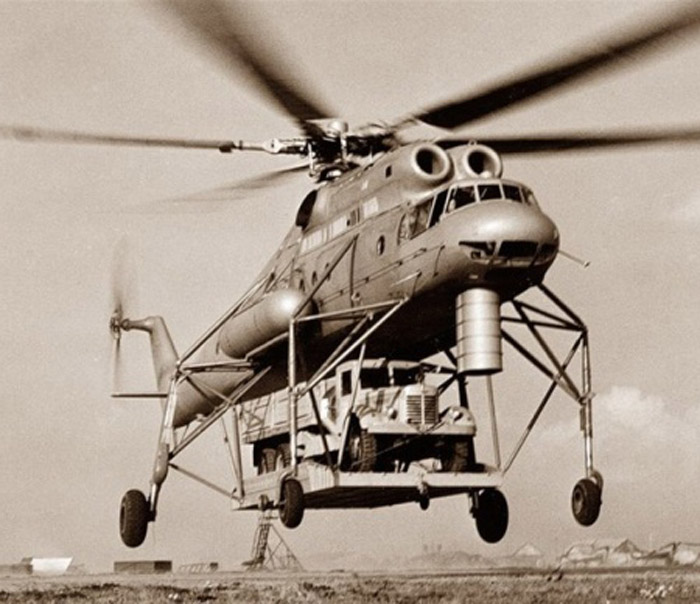
Designed in the late 1950s at the request of the Soviet government, the Mil Mi-10 (NATO reporting name Harke) was designed to carry its loads externally – unlike the Mi-6.
This meant that it could carry larger cargo, and as the helicopter itself was lighter, it could also carry heavier loads.
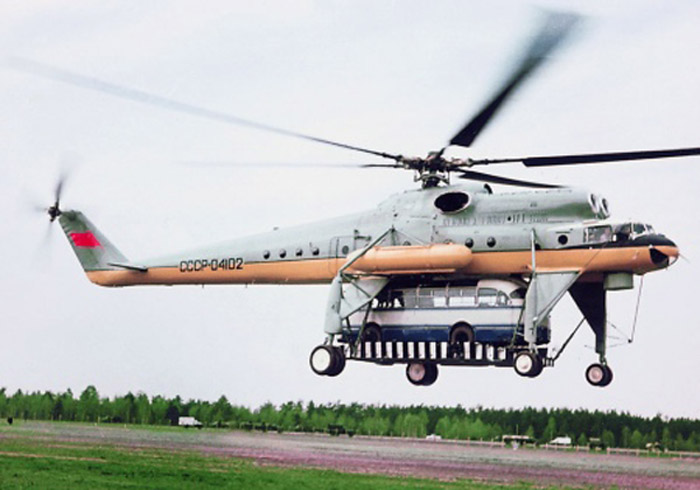
The first prototype of the Mil Mi-10 helicopter was completed in 1959. It used the same engines and avionics as the Mi-6. But the fuselage was smaller and narrower.
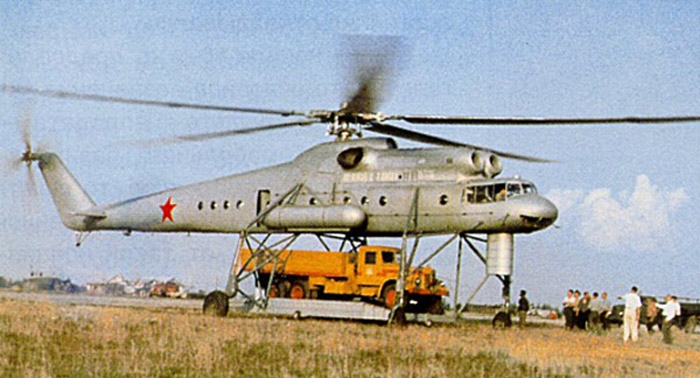
It also featured long, gangly legs which meant it could either taxi over its cargo, or the cargo could be maneuvered underneath for attachment.
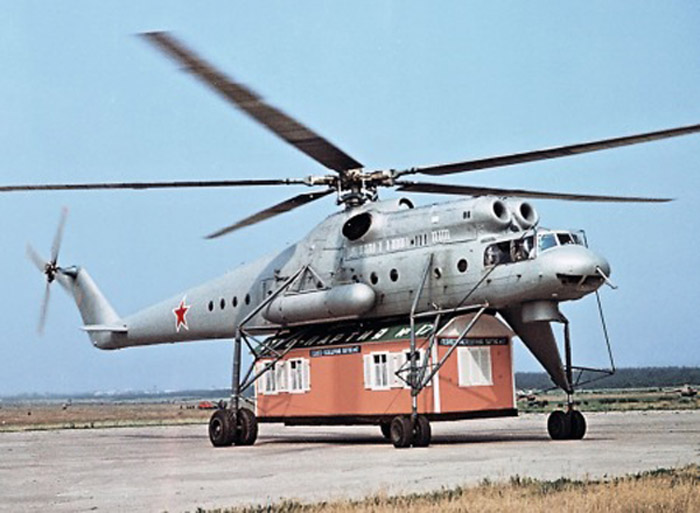
Inside the Mil Mi-10 helicopter, there was space for up to 28 passengers or up to 6,600 lbs (3,000 kgs) of cargo.
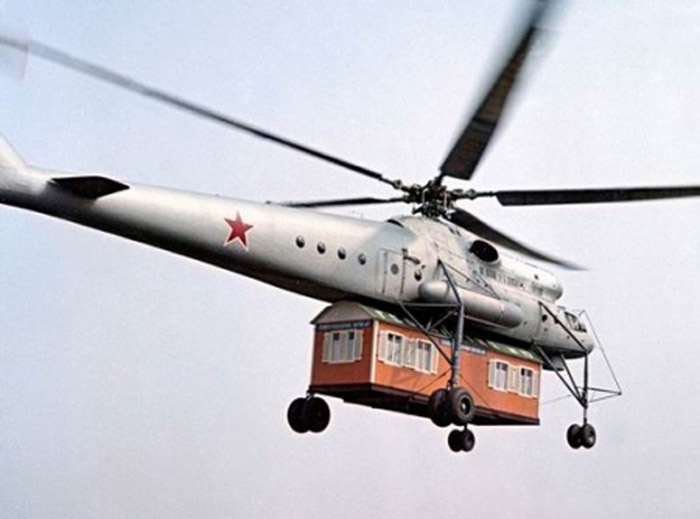
The Mi-10 could carry up to 33,000 lbs (15,000 kgs) externally on its load platform.
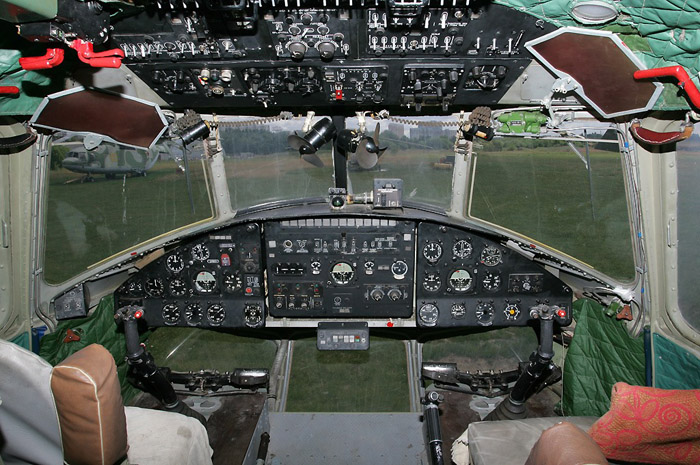
Little bonus for the end









